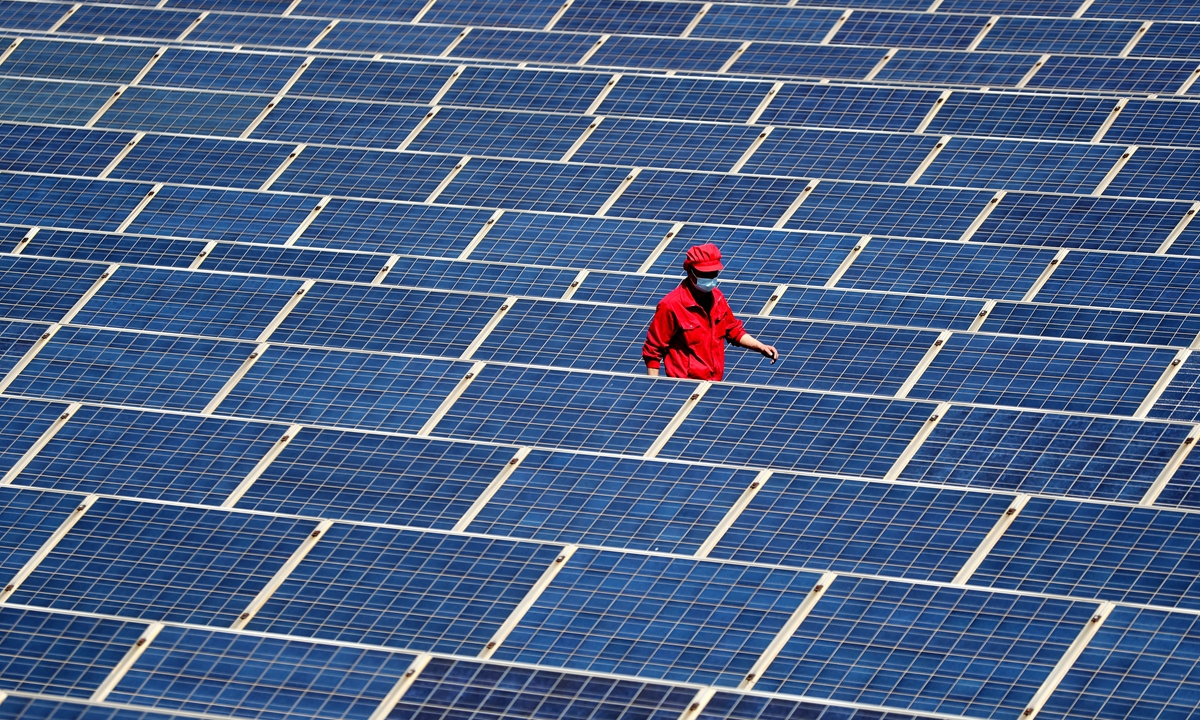China to regulate new energy waste disposal, covering batteries, solar panels, wind turbine blades

Solar panel Photo: cnsphoto
Along with the rapid expansion of China's new-energy industries, a growing volume of wastes, including discarded batteries, solar panels and wind turbine blades, have caused concern, with the country's environmental authorities stepping up regulatory measures and formulating specific disposal standards.
"We place great importance on the environmental regulation of these new types of solid wastes, striving to support the high-quality development of clean energy industries," said Guo Yijun, director of the Department of Solid Wastes and Chemicals at the Ministry of Ecology and Environment, during a press conference on Tuesday.
The new types of solid wastes primarily consist of batteries used in early models of electric vehicles, solar panels from renewable energy installations and wind turbine blades. These materials will increasingly be discarded as they reach the end of their lifecycle, driving up the volume of wastes, according to Guo.
In recent years, China's new-energy industries have developed rapidly, bringing the issue of wastes into sharper focus and attracting attention across society.
Guo noted that the ministry will strengthen environmental oversight of the dismantling and disposal of power batteries, solar panels and wind turbine blades, and will update pollution control standards based on the latest technological advancements.
According to Ma Jun, director of the Beijing-based Institute of Public and Environmental Affairs, the rapid expansion of the renewable energy sectors, driven by the country's "dual carbon goals," is set to create a significant amount of decommissioned equipment in the future.
"As installations increase, China will face large-scale waste equipment," Ma warned.
Data from the National Energy Administration shows that as of the end of June 2024, China's total installed renewable energy capacity reached 1.65 billion kilowatts, accounting for 53.8 percent of the country's total power generation capacity, a year-on-year growth of 25 percent. Wind and solar power together reached 1.18 billion kilowatts, surpassing the installed capacity of coal-fired power, which is 1.17 billion kilowatts.
In 2023, China's production and sales of new-energy vehicles reached 9.59 million and 9.50 million units, respectively, the Xinhua News Agency reported.
Ma also highlighted the challenges of recycling photovoltaic panels installed in vast western and rural areas of China. Recycling wind turbine blades is extremely difficult due to the strong materials from which the blades are made, usually glass fiber.
He emphasized that responsibility for the disposal of such waste, particularly in remote areas, remains unclear, along with the allocation of associated costs.
A 2023 CCTV report revealed that small workshops in Central China's Henan Province were burning discarded solar panels to extract valuable materials like silicon and silver, causing environmental pollution. The recycling rate is very low.
Guo stressed that while pollution control technologies are being rapidly developed, local governments are being instructed to prevent any loss of control over the situation. Moreover, East China's Jiangsu, North China's Hebei, and Northwest China's Qinghai provinces, among others, are currently piloting local standards for controlling pollution from discarded photovoltaic panels and wind turbine blades.
He said that those responsible for environmental pollution incidents caused by illegal dismantling will be strictly punished.




